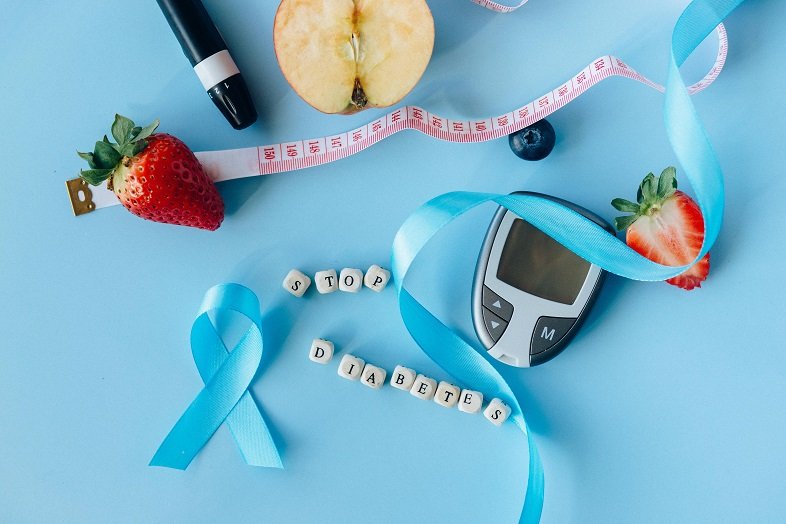2 Nov 2024: Acid reflux, a condition characterized by belly acid moving lower back up into the esophagus, is especially not unusual among people with diabetes. Often, it’s tied to gastroesophageal reflux sickness (GERD) and might cause signs like heartburn, regurgitation, and pain. For diabetics, coping with acid reflux requires a unique method due to the interactions between blood sugar levels and digestive health. Implementing lifestyle modifications can significantly alleviate signs and symptoms and sell higher fitness.
Here’s how.
Understanding the Connection Between Diabetes and Acid Reflux
Diabetes can increase the chance of acid reflux due to several elements. High blood sugar tiers over the years can cause diabetic neuropathy, wherein the nerves controlling belly muscle groups are damaged. This nerve damage can sluggish digestion, main to a situation referred to as gastroparesis. With slower digestion, stomach contents stay inside the stomach longer, increasing the risk of acid reflux.
Additionally, weight problems which are not unusual in Type 2 diabetes can exert extra strain on the belly, causing reflux. Managing each blood glucose range and lifestyle alternatives is for that reason important to relieve acid reflux disease in diabetics.
1. Maintain a Healthy Diet
For diabetics with acid reflux disease, a balanced, low-acid eating regimen is essential. Here are some key factors to focus on:
- Choose Low-Acid Foods: Acidic meals, including tomatoes, citrus fruits, and vinegar-primarily based ingredients, can trigger reflux symptoms. Instead, choose alkaline foods like leafy greens, complete grains, and greens like broccoli and asparagus.
- Lean Protein: High-fat ingredients can exacerbate acid reflux by slowing down digestion. Lean proteins which include skinless chicken, fish, and legumes are simpler at the belly and help adjust blood sugar.
- Avoid High-Sugar Foods: Sugary meals not only spike blood sugar stages but can also worsen acid reflux disease. Try to avoid or limit consumption of desserts, soda, and other high-sugar gadgets which can lead to digestive soreness.
- Opt for Fiber-Rich Foods: Fiber aids digestion, helping food pass more smoothly through the digestive tract. Fiber-wealthy ingredients consisting of oats, apples, carrots, and legumes can improve satiety and ease acid reflux disease symptoms.
2. Practice Portion Control and Avoid Overeating
Overeating is a not unusual contributor to acid reflux disease because it places pressure on the belly, which may push belly contents returned into the esophagus. Eating smaller, extra frequent meals can prevent overeating, supporting each blood sugar manipulation and acid reflux symptoms.
3. Monitor and Adjust Meal Timing
For diabetics with acid reflux disease, timing meals is as crucial as meal choices. Eating big meals properly earlier than bed can cause worse reflux, as mendacity down soon after eating lets in acid to float upward. Aim to have your ultimate meal as a minimum 3 hours earlier than bedtime. Additionally, spacing meals constantly throughout the day can help stabilize blood sugar stages and help higher digestion.
4. Stay Hydrated but Limit Fluids with Meals
Proper hydration is critical for digestion and blood sugar management, however drinking too much water at some point of food can increase stomach extent, potentially triggering reflux. Instead, strive to sip water at some point in the day and keep fluid intake low during food.
5. Exercise Regularly and Maintain a Healthy Weight
Weight management is an essential component of diabetes control and also plays a position in acid reflux disease. Excess weight, especially around the abdomen, puts strain on the belly and might push acid into the esophagus. Engaging in slight exercising including taking walks, swimming, or yoga no longer only enables weight management but also aids in digestion, decreasing the danger of acid reflux disease.
6. Elevate the Head While Sleeping
Reflux signs frequently worsen at night while mendacity is down. Elevating the pinnacle of your bed can save your belly acid from flowing again into the esophagus at the same time as you sleep. Using pillows to prop up your head or making an investment in a wedge pillow can assist lessen nighttime acid reflux.
7. Avoid Smoking and Alcohol Consumption
Both smoking and alcohol can loosen up the decreased esophageal sphincter, the muscle that prevents belly acid from moving returned up into the esophagus. This relaxation can exacerbate acid reflux disorder. For diabetics, fending off those conduct can also enhance blood sugar degrees, making it less difficult to manipulate diabetes.
8. Practice Stress-Reduction Techniques
Stress can cause both blood sugar fluctuations and acid reflux episodes. Techniques along with deep respiration, meditation, yoga, and mindfulness practices can decrease strain tiers, promote higher digestion, and help control diabetes more efficaciously.
Conclusion
For diabetics, coping with acid reflux is usually a result of taking a complete technique for their way of life. Eating a balanced, portion-managed weight loss program, exercising frequently, and preserving a healthy weight can help alleviate reflux symptoms even as also help blood sugar manipulation. Making small modifications to meal timing, hydration, and snoozing positions can offer further relief. As with any health circumstance, it’s vital to consult a healthcare issuer to make sure that way of life changes align with a man or woman’s fitness needs and treatment plans.
Disclaimer: This article is intended for informational functions best. Please seek advice from a healthcare expert earlier than making any modifications to your weight loss plan or lifestyle, particularly if you have diabetes or other underlying health situations.

Leave a Reply